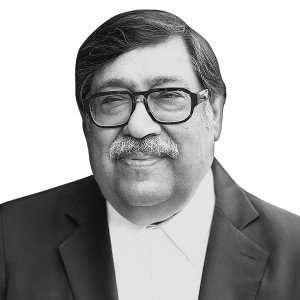India should continue time-bound arguments after the pandemic
30 April 2020

In the current pandemic situation, the Indian judiciary has developed new ways to administer justice. To ensure that justice is delivered, lawyers can now argue matters through video conferencing system like Cisco Webex or Zoom. However, the catch is that this system will only work if the arguments are taken up as online appointments and have a timeslot allotted. In other words, all the arguments would be ‘time-bound’.
It is proposed that limiting the time through such time slots can be the only possible way to dispense justice efficiently, and this model ought to be adopted by the courts for IP litigation even after the pandemic is over.
It is important to note that lifespan of a fully contested litigation in India has been reduced, thanks to the Commercial Courts Act, 2015. Apart from the fact that most of the matters are resolved through settlements or mediation, several time limits have also been strictly enforced under the act, including:
- Compliance under the proviso to Order 39 Rule 3 of the Code of Civil Procedure 1908 (CPC) after an interim injunction is granted, of all the relevant court papers to the opponent and to file an affidavit within 24 hours. If not complied with, this threatens to vacate the interim injunction;
- The written statement must be filed within 30 days and, in any case, not exceeding 120 days from the service of summons. This has been interpreted to be a strict deadline closing the right of the party to defend its case;
- An affidavit of admission/denial must be filed along with the written statement or with the replication or else the pleading may not be taken on record; and
- A strict deadline for filing the replication within 30 days of receipt of the written statement, with a maximum of 15 days extension.
Similar deadlines exist for the filing of other documents, preferring of Chamber Appeals and Appeals to the Division Bench.
Despite having the aforesaid mechanisms in place, most of the contested matters remain stuck at the final stage, i.e., at a stage where the evidence is completed, and the matter is pending for arguments and judgement. Such matters are not taken up by the court because:
- Judges are already burdened with fresh matters and applications, including frivolous applications by defendants for rejection/return of plaint under Order 7 Rule 10 or Order 7 Rule 11 of the CPC;
- In the absence of a time slot system, matters are often argued for long durations; and
- Effective working hours are consumed by fresh matters, which are argued for many hours.
At times, final matters are taken up by the court upon filing an application showing the grounds of urgency, and an hour or two is dedicated to the matter. However, the matter seldom gets concluded in the allotted time frame and is eventually adjourned, because:
- There is no time limit, and one side argues matters for hours;
- Adjournments occur due to paucity of time;
- A sudden change of roster; or
- The matter is released by the judges.
Upon cogitation, one realizes that the pending final matters before the Indian Courts have a lot to offer, once decided:
- There would be more judgments to guide litigants on esoteric and gray areas of the law;
- Cases would be concluded quickly, which would be a desired change; and
- There would be major cost savings. This is good not only for SME clients but also for large corporations, which are burdened with the crushing cost of fighting cases, where numbers are directly proportional to the “well-knownness” of their trademarks or the popularity of their patents, designs or copyrights.
Therefore, it is paramount to dispose pending final matters to obtain judgments, and the efficacious way to do that is by having time slots. For the convenience of readers, the mechanics are explained below:
- Slots of speaking time will be allocated to parties for advancing arguments;
- Each slot will be 10 minutes; and
- The number of time slots will depend upon the nature of hearing:
- Normal applications would receive a single slot;
- An injunction application would receive four slots;
- Recording evidence would receive 18-24 slots; and
- For final arguments, each side would receive 30 slots, with an additional 15 slots for rebuttal.
If a party wants more time, they must file an application before a hearing officer (who functions as a timekeeper) and convince the officer of the need for more time; accordingly, the hearing officer might or might not permit additional time slots. This time slot system will ensure that the hearing is concluded in time bound manner.
Time slots are thus sine qua non of an effective hearing and ought to be implemented with three clear understandings:
- That with passage of time, the habit to keep time will solidify;
- Parties that do not complete their arguments in the allotted time would be encouraged to provide written arguments; and
- In exceptional cases, courts would have the discretion to increase allotted time.
There is thus a key realization that the timely disposal of litigation matters alone can serve the ends of justice.









